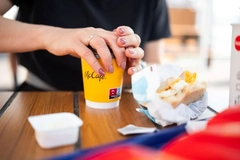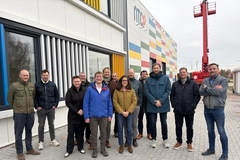Customer feedback drove carton range revamp to cut waste and boost line speed
25 Jun 2012

Tetra Pak says customer feedback led it to introduce new sizes for a carton range popular in developing markets such as China and Russia, and claims they will cut product waste and boost line efficiency.
Tetra Pak says customer feedback led it to introduce new sizes for a carton range popular in developing markets such as China and Russia, and claims they will cut product waste and boost line efficiency.
The company will offer the improvements across its basic Tetra Fino Aseptic range, a pillow-shaped carton specifically aimed at price sensitive markets; they include an 'OptiSize' volume concept allowing for new size options and Eco Flexo photographic printing.
Tetra Pak said that customers had traditionally under-filled 250ml and 100ml Tetra Fino Aseptic packages, but following customer feedback, the firm had developed its OptiSize kit enabling beverage and milk producers to change the tube diameter and jaw length of the A1 filling machine.
Greater production efficiency
Hemant Krashak, Tetra Pak product director, promised manufacturers "greater production efficiency", since a Tetra Pak A1 filler with the OptiSize upgrade could fill up to 13,000 220ml packages per hour: 8.5% more than the same machine producing under-filled 250ml cartons.
Customers were now able to produce cartons especially designed for 70ml and 220ml portions (of milks, juices and teas) Tetra Pak said, while further size options would follow — thus cutting down on packaging material waste.
Standard range sizes are 100ml, 200ml, 250ml, 500ml and 1 litre, cartons are opened with a straw or scissors.
Tetra Pak is also introducing its 'Eco Flexo' photographic printing process as a Tetra Fino Aseptic range option and said it would allow for better product differentiation and greater brand impact as a result.
"Tetra Fino Aspetic is well-known as a simple and cost-effective package that enables producers to deliver safe, nutritious beverages to consumers looking for value as well as quality," Krashak said.
He added: "With today’s announcement of OptiSize and Eco Flexo, producers can drive even greater efficiency and value while providing stand out branding which will have an impact on store shelves."
New printing technology
Eco Flexo allows the printing of photographic images onto uncoated paperboard packaging: use of different paper, inks, screen ruling, anilox and dot-gain interactions all reduced mottling effects and maximise print quality, according to Tetra Pak.
The printing technology is now being rolled out across Tetra Pak’s converting factories in China (Beijing and Hohhot), Pakistan (Lahore) and Russia (Moscow). India (Pune) and Brazil (Monte Mor) are scheduled to follow in early 2013.
Mr Liu Jun, deputy general manager of Chinese launch customer Xi’an YinQiao, said that EcoFlex had improved the firm's brand image. "Consumers are more aware of our products and we have increased sales by more than 10% since the introduction of photographic printing," he said.
Source: Tetra Pak
All content and features on this website are copyrighted with all rights reserved. The full details can be found in our privacy statement
Subscribe to our newsletters
By continuing to browse our site you agree to our Privacy Statement











